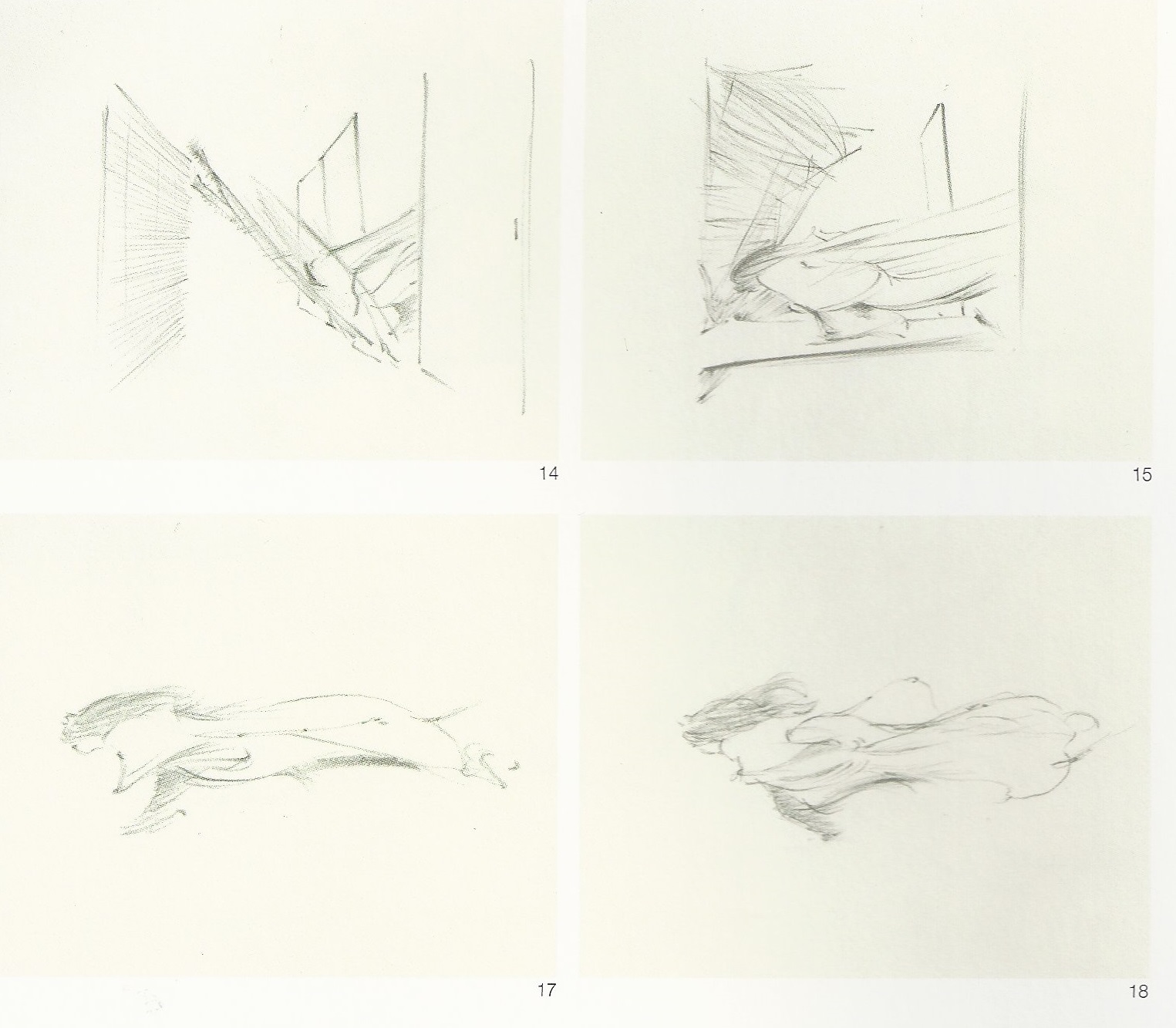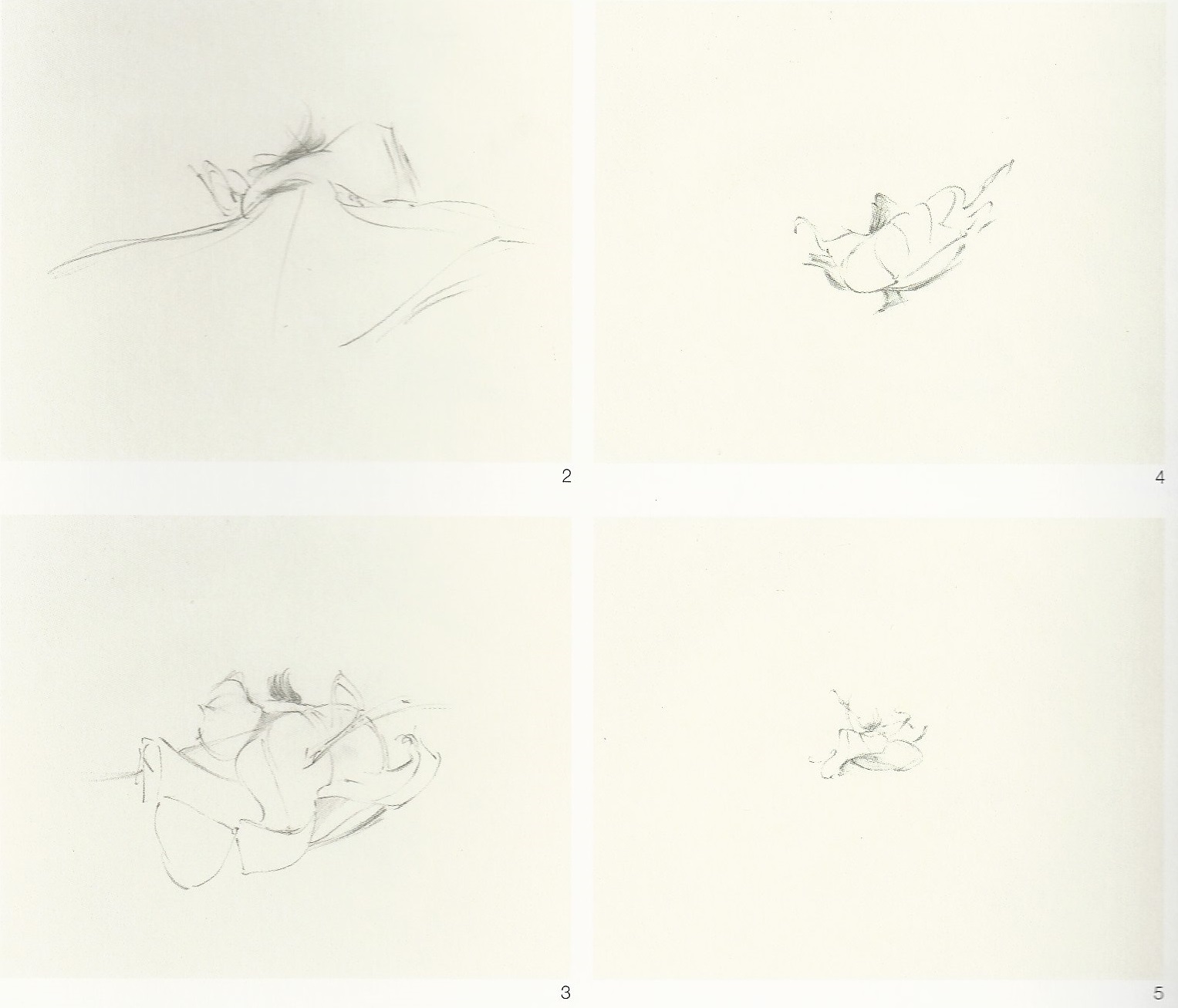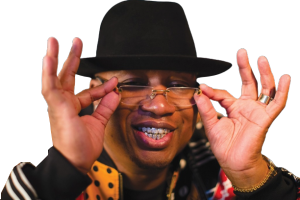After doing some KA on Blade and Soul spurred on by his brother, Hashimoto rejoined Ohira, on Masaaki Yuasa’s Ping Pong animating a portion of the OP. This OP is all over the place with expressionistic animation, and fits in perfectly to the vibe of Yuasa style surrealism

Hashimoto 1:06-1:17
Late that year, Hashimoto and Ohira joined the Animators Expo to assist directors Takeshi Honda, and Mahiro Maeda on Nishi-Ogikubo

Ohira 6:40-7:00, Hashimoto 7:01-8:01
A reunion of legends with Ohira and Hashimoto joining Hiroyuki Okiura, Toshiyuki Inoue, Masashi Ando, and newer animator Akira Honma. Ohira and Hashimoto’s beetle purse scene is in a completely different realm of Okira or Inoue’s, where they reprise a more tangible and tactile realism there is no such thing for the other two. Ohira completely smears the scene in messy and wriggly drawings, Hashimoto is a little bit more lumpier, but everything is way more on model. Hashimoto is truly the light, to Ohira’s darkness.He also did some brief cuts on When Marnie Was There, an episode of Lupin, and the next two years two Naruto films. His work on the Boruto film was pretty compelling to a lot of people.
In 2016, Hashimoto did a solo animated commercial for a company called Auto Panther a car dealership, and for some reason Hashimoto showed out.

Who thought that a commercial for a car dealership would be one of the highlights of your career as an animator? Much like Kaguya this entire scene took a whopping six months to make. I love how by this point Hashimoto’s style has matured into a more rounded and softer style. Sure it has the bold exaggerations, but all the cars characters and effects have this pillowy quality to them that is innately pleasing.
Hashimoto would get his first credit on a Masaaki Yuasa film on Lu Over the Wall

One of the two Yuasa film’s released in 2017, the second being The Night is Short, Walk on Girl. Ohira was involved on both films and could not carry the heavy load of animation duty all by himself so Hashimoto was assigned to work on a few key scenes. These scenes have some of the more smoother in-betweening from Hashimoto’s cuts, likely due to potentially working in a digital environment? As the drawings seem devoid of Hashimoto’s sketchiness.Hashimoto then returned to the newly founded Studio Ponoc’s first feature film Mary and The Witch’s Flower
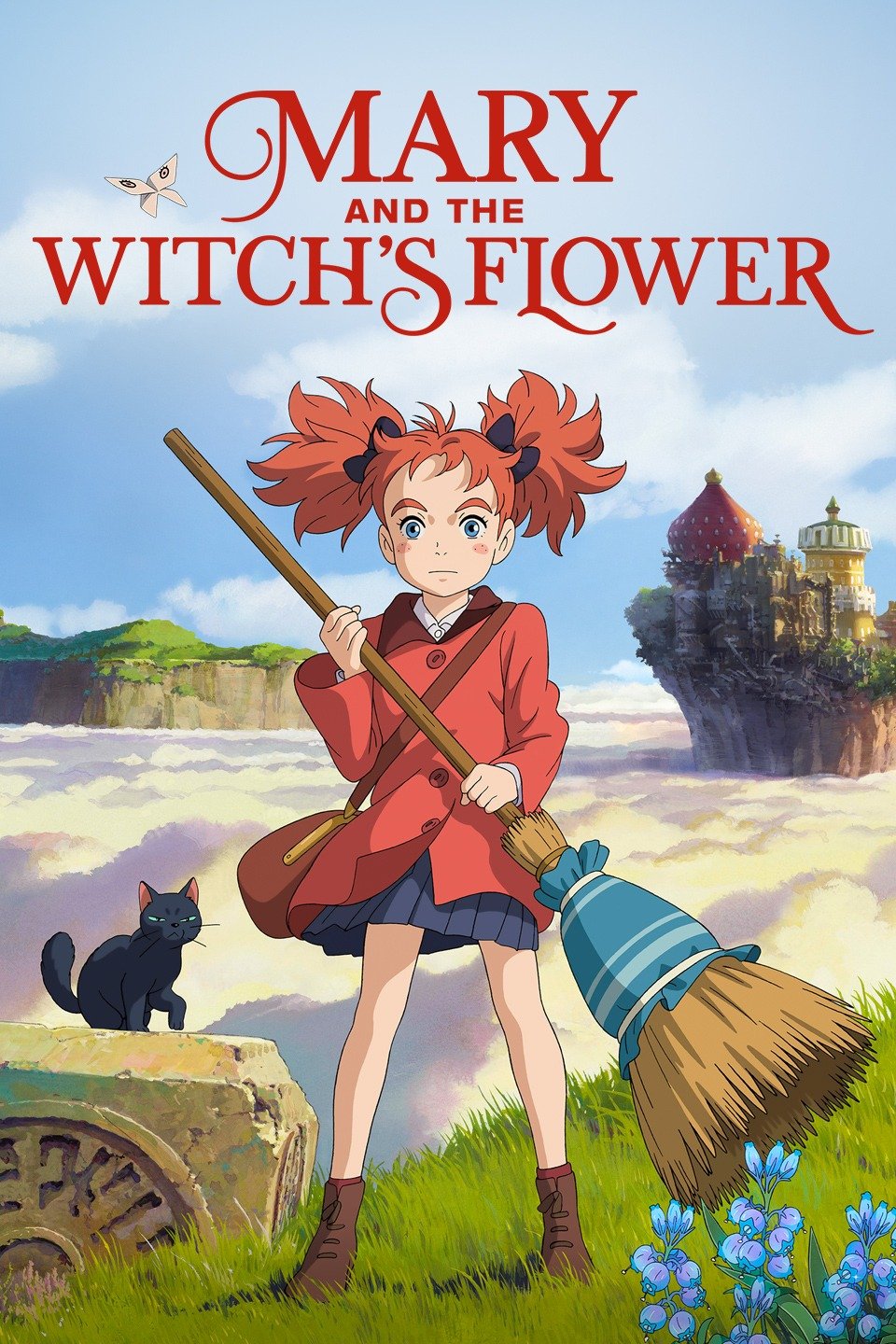
Directed by Hiromasa Yonebayashi one of Ghibli’s top animators. The film is a decently magical romp, with some fantastic spectacle, but not leaving much up to the imagination. Ohira and Hashimoto were both brought along for the movie, and it at this point with little connection they were pretty much just showing off. Ohira once again wows with his super misshapen take on effects and creatures. Meanwhile Hashimoto animates his longest scene ever at two minutes and 18 seconds. His scene has some extremely difficult layout work, as the sheer amount of character and effects are mind blowing to think about how he drew them, and what his approach was.The two later regrouped with an old friend Shinichiro Watanabe on Blade Runner 2022: Black Out


Hashimoto presumed for 0:58-1:24 for fire effects, confirmed from 1:25-1:58, Ohira 6:45-8:25
With character designs by legendary Gundam animator and director Shukou Murase, and Watanabe’s epic scope this short is a great what if into a Production IG approached anime for Blade Runner. Watanabe found it only best to bring some of the best animators he knows from the past, but also newer talent as well. We have some usuals with Hiroyuki Okiura, Takashi Hashimoto, Kouichi Arai, Mitsuo Iso, and Murase, and surprisingly Tatsuyuki Tanaka who at this point had not animated on anything major in more than a decade, I am curious as to how he was asked on. Newer talent was made up of Bahi JD who’s Iso-esque style made for nice and decisive action, another was the incredible Hironori Tanaka who assisted with Los Angeles’s destruction after the EMP bomb goes offHashimoto’s haunting intro feels very reminiscent of his work on the Animatrix with just how obtuse and abstract it is, the hand held photography also has hints of Maeda’s short from that film Second Renaissance. The clearest indication of this being Hashimoto’s scene is this one still frame shot of humans looking at hung replicants, his art style really brings out the ugliness in humanity.

The next year saw Hashimoto working on another Ponoc feature, Modest Heroes

Hashimoto did two shorts, one with Samurai Egg and the other being Invisible. Samurai Egg’s dance scene is wonderfully expressive, I love how Hashimoto is able to add his swooping brush arcs, and apply it into dance choreography. It’s not very smooth animation, but the flexibility and gestural motion feels very Disney like, with his abstraction sprinkled on top. The other short Invisible has one of the most complex shots of Hashimoto’s career. We got the Invisible man flying in front of a semi truck that starts as a POV with road background animation then the camera slowly moves in and through the man’s clothes, then coming into frame with a full body shot. It is a shrewd storyboard, made all the more better with Hashimoto animating it.After a short appearance on Mappa’s Dorohedoro Hashimoto returned to a slew of animated projects in 2021. First was Tomorrow’s Leaves, a promotional video for the Olympics

Hashimoto 4:30-5:08
The second would come on Misaki no Maiyoga or the English translation being The House of the Lost on the Cape, but that is way too long.

The surrealist dream sequences of the film spearheaded primarily by Bahi JD, Hashimoto, Ohira, and Production IG affiliate Yasunori Miyazawa. Miyazawa is the third member of the expressionist animators, and his take is a lot less sturdy with character animation, to a point where it literally looks like they are about to erupt. The four were also joined by Hokuto Sakiyama a student and admirer of Ohira, along with Takuji Miyamoto.The last would be on The Deer King directed by Masashi Ando

A film where nearly 1/3 of the animation was handled by Toshiyuki Inoue, whether in genga or layout stages. In this film I felt Hashimoto was unreasonably held back in terms of animation and what he could do. Yes there were hints of him doing some passable nightmare sequences sakugabooru.com/post/show/206133 sakugabooru.com/post/show/206186, but I can’t say they were particularly boarded well or leaves a lot of investment for the viewer. The strongest scene he had was a chase scene in the middle sakugabooru.com/post/show/206231Hashimoto is a rarity in the industry. Much like his comrade Ohira, he has never been afraid to push the boundaries of what his animation is capable of. The trajectory of his career with his friend is probably one of the most interesting in anime if you are curious of the philosophy of what realism actually entails in anime. So much of his work contains that, and down the line into later in his career you can see him perfect a style more hinging on what he likes and what works emotionally for a scene. He has always imbued so much of his aesthetics, spirituality, and attitude into his work, and can never be changed. Ohira and Hashimoto truly are the pioneers of left-field animation in Asia, and will always be the highlights of whatever they touch.
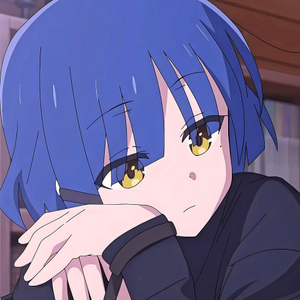 Carmen is Composed
Carmen is ComposedShinji Hashimoto (continued in next pages) @ragedsycokiller
also @ragedsycokiller could you add Takashi Hashimoto (continued next pages) right after Nighigori in OP? Thanks! 👍
Anyone else get a email about the Crunchyroll lawsuit? You might be entitled to some money if you ever subscribed.
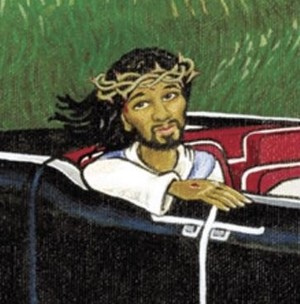 proper 🔩Oct 11, 2023·1 reply
proper 🔩Oct 11, 2023·1 reply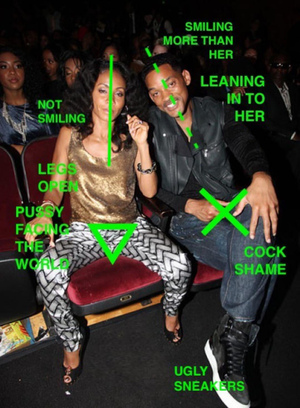 POOM POOM DOOM
POOM POOM DOOMAnyone else get a email about the Crunchyroll lawsuit? You might be entitled to some money if you ever subscribed.
way too lazy to file a claim just to maybe get like 10$ back lol.
 proper
properway too lazy to file a claim just to maybe get like 10$ back lol.
It's $30 but yeah I feel you.
 hayabusa 🌐Oct 11, 2023·1 reply
hayabusa 🌐Oct 11, 2023·1 replynot sure if imma stick with helck tbh
kinda got boring for me and the animation is not so great either
 hayabusa
hayabusanot sure if imma stick with helck tbh
kinda got boring for me and the animation is not so great either
drop it and watch hoshikuzu telepath instead

